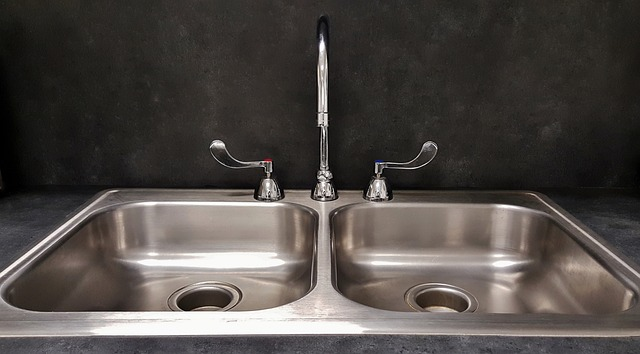Plumbing Tips & Tricks: 10 Ways to Save Time and Money
Imagine reducing water bills, avoiding costly repairs, and increasing the longevity of your home’s plumbing system. After readying these plumbing tips & tricks, you find that it’s all possible with proper maintenance and a few essential plumbing tips & tricks 10 ways to save time and money. In this blog post, we’ll take you through a comprehensive guide to help you save time and money while keeping your plumbing system running smoothly using these plumbing tips & tricks 10 ways to save time and money.
Key Takeaways
- Utilize natural drain cleaners and adjust water heater temperature for efficient maintenance.
- Regularly inspect pipes to prevent costly repairs, and use quality plungers to address clogs.
- Familiarize yourself with shutoff valves, fix dripping faucets, install low flow shower heads for water conservation.
Effective Plumbing Tips and Tricks

Every homeowner should be familiar with the plumbing system to prevent potential problems and keep the plumbing system running smoothly. Regularly maintaining your plumbing system can help reduce the risk of costly repairs, avoid inconvenience, and minimize the chances of water damage, ultimately helping you save money.
Here are the top plumbing tips that every homeowner should know. From avoiding clogged drains with grease and food particles to regularly inspecting pipes for leaks or damage, these best practices will ensure the longevity of your plumbing system and keep it running smoothly.
Avoid Clogging Drains with Grease and Food Particles
A common cause of clogs in the plumbing system is foreign objects, such as feminine hygiene products, cotton swabs, and other items. To prevent clogs in drains, avoid putting coffee grounds, bacon grease, and potatoes down the drain, as these items can cause stubborn clogs that may require boiling water or other methods to clear.
Using sink strainers is an effective way to capture food particles and other objects that may otherwise cause a blockage in the kitchen sink drain, preventing the need to use the main shut off valve in case of severe clogs or issues with the garbage disposal.
Moreover, maintaining regular drain cleaning can help mitigate clogs and blockages, enhance drainage, boost energy efficiency, and avoid the need for professional plumbing services.
Regularly Inspect Pipes for Leaks or Damage
To prevent further damage to your home and avoid larger repairs, it’s important to regularly inspect your plumbing pipes. Keep an eye out for signs of water damage, mold or mildew, and increased water bills, which may indicate a leaky faucet or other issues.
Fixing leaks promptly, such as a leaky toilet, helps prevent water wastage and unnecessary costs. For minor leaks, epoxy putty may be employed; if the affected area is substantial, the pipe should be replaced.
If the leak is significant or the repair process is unclear, it is recommended to consult a professional plumber, especially when dealing with water heaters.
Proper Toilet Usage: Flush Only Toilet Paper and Human Waste
If you listen to any of these plumbing tips, let this be the most important! Preserving your plumbing system and avoiding potential problems requires following these guidelines:
- Flush only toilet paper and human waste down the toilet.
- Do not flush items such as feminine hygiene products, cotton swabs, or other foreign objects.
- Dispose of these items responsibly according to proper guidelines.
Using low-flow toilet paper may help reduce the frequency of clogs if your toilet is often clogged. The use of low-flow toilet paper can help to avoid clogging, ensuring the smooth functioning of your plumbing system.
Plumbing Tips To Utilize Natural Drain Cleaners
Employing natural drain cleaners, like baking soda and vinegar, is both safer and more effective than using harsh chemicals, in addition to being more economical. To use this natural drain cleaner, follow these steps:
- Mix baking soda and vinegar together.
- Pour the mixture down the drain.
- Allow it to sit for a few minutes.
- Flush with hot water.
Using harsh chemicals to clear a blockage can potentially damage pipes and result in more harm than good. With the use of natural drain cleaners, you can efficiently clear clogs without causing damage to your plumbing system.
Efficient Water Heater Maintenance

Maintaining your water heater properly ensures its efficient operation and helps keep your plumbing system’s warranty valid. By adjusting the water heater temperature and scheduling annual professional inspections, you can save energy, reduce costs, and prolong the lifespan of your water heater.
This section covers adjusting your water heater’s temperature and the necessity of annual professional inspections.
Adjust Water Heater Temperature
One of our favorite helpful plumbing tips is adjusting your water heater’s temperature to 120°F. It can help you save energy and reduce costs without sacrificing comfort. To adjust the temperature, locate the thermostat and adjust it to the desired temperature.
Keeping your water heater at the optimal temperature boosts its efficiency, which can lower your energy bills and extend the appliance’s lifespan.
Important Plumbing Tips: Annual Professional Inspection
Having professional inspections annually is necessary to maintain your plumbing system’s warranty and ensure its efficient performance. During a water heater inspection, a professional will evaluate for:
- Water leaks
- Banging sounds or unusual noises
- Foul odors
- Rust buildup or cracks on the casing of the system
- The integrity of the gas lines and shutoff valves
In addition to water heater inspections, it is recommended to inspect pipes for any leaks or damage, verify proper toilet usage, and review for any natural drain cleaners.
Simple DIY Plumbing Fixes

Many common plumbing problems can be addressed with simple DIY fixes. From using quality plungers to clear clogs to applying plumber’s tape to prevent leaks around fittings and joints, these DIY plumbing tips solutions can save you both time and money.
This section outlines:
- The advantages of using quality plungers to clear clogs
- The application of plumber’s tape to prevent leaks
- Recognizing when to engage a professional plumber for complex repairs
Use Quality Plungers for Clearing Clogs
Investing in high-quality plungers can provide a more efficient approach to addressing plumbing issues like clogged sinks and toilets. To utilize a plunger, follow these steps:
- Fill the sink or tub with sufficient water to cover the plunger’s cup.
- Position the plunger over the drain and press down firmly.
- Move the plunger up and down rapidly to generate suction.
- Once the clog is cleared, flush the drain with hot water.
Using a quality plunger not only ensures a superior seal and increased pressure but also guarantees durability and multiple uses.
Apply Plumber’s Tape to Prevent Leaks
Also known as Teflon tape, plumber’s tape is a thin, white tape used to seal pipe threads and prevent leaks. To apply plumber’s tape, start by wrapping it around the threads of the pipe in a clockwise direction, ensuring that it is wrapped tightly and evenly with no gaps.
Utilizing plumber’s tape can help avert leaks, save time and money, and lessen the potential for water damage. It is also straightforward to use and can be applied to many different materials.
Know When to Call a Professional
Recognizing when a plumbing problem exceeds your skill level or persists despite DIY attempts is crucial. Gas line, sewer line, and major water line repairs should always be undertaken by a qualified plumber.
Engaging a professional plumber guarantees that the task is accomplished accurately and securely, ultimately saving time and money. If you’re unsure about the complexity of a plumbing issue, it’s best to consult a professional plumber for advice and assistance.
Locate and Familiarize Yourself with Shut-Off Valves
Being aware of the location of shut-off valves is essential in order to be able to shut off the water to the entire house in an emergency situation. The main shut-off valve is a crucial part of a residence’s water supply line. It is usually found near the water meter or where the main water line enters the property..
To become familiar with shut-off valves, locate them in your home and learn how to operate them. Familiarizing yourself with shut-off valves ensures that you can quickly and efficiently respond to a plumbing emergency.
Water Conservation Plumbing Tips
Conserving water plays a vital role in saving money and safeguarding the environment. By fixing dripping faucets and installing low-flow shower heads, you can significantly reduce water waste and lower your monthly water bills.
This section will cover the process of fixing dripping faucets to conserve water and reduce costs, along with the benefits of installing low-flow shower heads for water saving without pressure loss.
Fix Dripping Faucets
A slow-drip faucet can waste up to 15 gallons of water per day. To fix a dripping faucet, follow these steps:
- Shut off the water supply to the faucet.
- Remove the decorative cap on the handle.
- Unscrew the handle and remove the cartridge.
- Assess the cartridge for any damage or wear, and replace it if necessary.
- Reassemble the faucet.
- Activate the water supply and inspect for any leaks.
By fixing dripping faucets and other plumbing fixtures, you can conserve water, reduce costs, and maintain the efficiency of your plumbing system.
Install Low-Flow Shower Heads
Installing a low-flow shower head can help you save water without sacrificing pressure. To install a low-flow shower head, follow these steps:
- Turn off the water supply to the shower.
- Unscrew the existing shower head.
- Replace it with the new low-flow shower head, using plumber’s tape to ensure a tight seal.
- Turn the water supply back on.
- Test the new shower head.
In addition to conserving water, installing a low-flow shower head can help reduce your monthly water bills and contribute to a more sustainable lifestyle.
Summary Of Helpful Plumbing Tips
In conclusion, proper plumbing maintenance and the implementation of effective tips and tricks can save time, money, and protect the environment. From regular inspections and fixing leaks to using natural cleaners and installing low-flow shower heads, these best practices ensure the longevity and efficiency of your plumbing system. By following these guidelines, every homeowner can enjoy a trouble-free, cost-effective, and eco-friendly plumbing system.
Frequently Asked Questions
How can I save money on plumbing?
To save money on plumbing repairs, perform regular maintenance on your plumbing system and implement simple tips like turning off taps properly, cleaning drains regularly, fixing cracks and leaks quickly, and upgrading shower heads.
How do you maintain plumbing work?
To maintain plumbing work, regularly check for leaks and inspect for any signs of damage; be mindful of what goes down the drains and what is put in the garbage disposal; flush the water heater yearly; install mesh drain covers; and keep your drains clear.
What are the common mistakes in plumbing?
DIY plumbers often make mistakes such as using drain cleaner as their first choice, wrapping thread tape backward, not gathering the right tools before starting, going too ‘Hulk’ on stuck shut-off valves, and over tightening connections.
How can I prevent clogs in my drains?
To prevent clogs in drains, avoid putting grease and food down them, use sink strainers, and regularly clean the drains.
What is the recommended temperature for a water heater?
Set your water heater temperature to 120°F to maximize energy efficiency and lower costs.
We love to share our favorite plumbing tips! Ask us for more.
